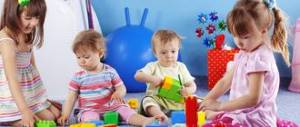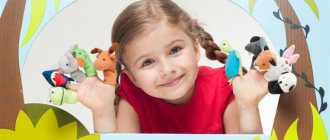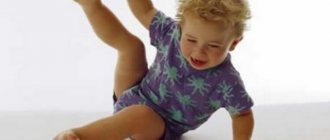Social-emotional development of preschool children article on the topic
Social-emotional development of preschool children.
The content of the educational field “Socialization” is aimed at achieving the goals of mastering initial ideas of a social nature and including children in the system of social relations.
This goal cannot be achieved without the social-emotional development of preschoolers.
Social-emotional development:
- ability to cope with your emotions and feelings;
-effective communication;
- relationships with yourself, with loved ones, with friends, with family, with society.
Some authors also call social-emotional development development
hearts.
Why is it necessary to develop social-emotionally? The sooner a child learns
understand the state of those around him, the easier it will be for him to settle into any team, to find a common language with peers and adults.
The problem of the development of emotions, their role in the emergence of motives as regulators of a child’s activity and behavior is one of the most important and complex
problems of pedagogy.
The task of harmonious development of preschool children presupposes not only a certain level of development of a wide range of knowledge and skills, methods of mastering
content, but also the formation of self-esteem and self-image, as well as a fairly high level of development of its emotional sphere, social orientation and moral position.
When a child enters kindergarten, a new stage of his emotional development begins. A powerful motivator for the manifestation of emotions is the children's group, as well as various types of joint activities organized by the teacher with peers (games, educational activities, walks), where the child gains emotional experience in communicating with other people and develops a certain attitude towards himself.
Knowledge and ideas about norms of behavior, supplemented by an emotional attitude towards these norms, turn into beliefs and become internal motivators
children's activities and behavior.
The main goal of social-emotional development is:
introduce the child into the complex world of human emotions, help him experience a certain emotional state, explain what it means, and give it a verbal name. By accumulating certain moments of living and fixating on any feeling, the child will be able to create his own emotional fund, with the help of which he will be able to navigate his own feelings and the feelings of the people who surround him. A person judges the emotional state of another by special expressive movements, facial expressions, and changes in voice. Posture, gesture, and movement patterns largely complement facial expressions and play an important role in conveying an emotional state.
Socio-emotional development is the process of transmission and further development of the sociocultural experience accumulated by humanity. This experience is represented in the personality structure by a unique combination of four components that are closely interconnected: cultural skills, specific knowledge, role behavior (behavior in a specific situation, social competence) and social qualities (cooperation and care for others, competition and initiative, autonomy and independence, social adaptability)
All these components of social development are closely interconnected. Changes in one of them inevitably entail changes in the other three. Emotional distress associated with difficulty communicating with other children can lead to two types of behavior: negative strong emotional reactions (anxiety manifests itself as aggressiveness) and a persistent negative attitude towards communication (restrained reaction, isolation, avoidance of communication)
Explanatory diagram
Communication difficulties—hostility—conflict
Anxiety, feeling of self-distrust
Inferiorities
Social and personal development (socio-emotional)
In this area, the child develops a positive attitude towards himself, other people, the world around him, and the communicative and social competence of children.
The most important basis for a child’s full social and personal development is his positive sense of self: confidence in his abilities, that he is good, that he is loved. Adults take care of the child’s emotional well-being (support, encourage, help to believe in their strengths and capabilities), respect and value them regardless of their achievements, strengths and weaknesses, and establish trusting relationships with children; contribute to the child’s development of self-esteem, awareness of his rights and freedoms (to have his own opinion, choose friends, toys, activities, have personal belongings, use personal time at his own discretion). Adults respect the interests, tastes and preferences of children (in play, food, clothing, etc.).
Adults contribute to the development of a child’s positive attitude towards people around him, foster respect and tolerance regardless of social origin, race and nationality, language, religion, gender, age, personal and behavioral identity (appearance, physical disabilities). Adults help to understand that all people are different, it is necessary to respect the self-esteem of other people, take into account their opinions, desires, views in communication, play, and joint activities. Encourage manifestations of benevolent attention, sympathy, and empathy. It is important that the child has the desire and ability to provide help and support to another person.
Adults create opportunities to introduce children to the values of cooperation with other people and help them realize the need people have for each other. To do this, children should be encouraged to play together and organize their joint activities aimed at creating a common product. In the process of staging a performance, constructing a common building, making an artistic panel together with peers and adults, etc., the child acquires the ability to set common goals, plan joint work, subordinate and control his desires, coordinate opinions and actions. Adults help children develop a sense of responsibility for another person, a common cause, a given word.
Adults pay special attention to the development of the child’s communicative competence. Help children recognize the emotional experiences and states of others - joy, grief, fear, bad and good mood, etc.; express your emotional feelings and experiences. To do this, adults together with children discuss various situations from life, stories, fairy tales, poems, look at pictures, drawing children's attention to the feelings, states, and actions of other people; organize theatrical performances and dramatization games, during which the child learns to distinguish and convey the moods of the characters being portrayed, empathizes with them, and receives models of moral behavior.
Adults help children develop social skills: they help them learn various ways to resolve conflict situations, negotiate, take turns, and establish new contacts. An important aspect of a child’s social development in preschool age is mastering the basic rules of etiquette (greeting, thanking, table manners, etc.). Children should be introduced to the basic rules of safe behavior at home and on the street (know who to contact if they are lost on the street, give their name, home address, etc.).
It is important to create conditions for the development of a caring, responsible attitude of the child towards the surrounding nature, the man-made world, to care for animals and plants, feed birds, maintain cleanliness, take care of toys, books, etc.
I bring to your attention materials for decorating a stand for parents
Learn to love and understand people, and there will always be friends next to you
Dear fathers and mothers,
grandparents!
You are your child's first and most important teachers. His first school - your home - will have a huge impact on what he considers important in life.
A child learns everything in communication with an adult; a child’s early experiences create the background that leads to the development of speech, the ability to listen and think.
“Years of miracles” is what scientists call the first five years of a child’s life. The emotional attitude towards life laid down at this time for people and the presence or absence of incentives for intellectual development leave an indelible imprint on all subsequent behavior and way of thinking of a person.
Each person should be able to listen to the other, perceive and strive to understand him. How a person feels about another and can influence him without offending or causing aggression depends on his future success in interpersonal communication. Very few of us know how to truly listen to other people well, to be receptive to the nuances in their behavior. It takes some skill and some effort to combine communication with careful observation and listening. Equally important are the abilities to listen and understand oneself, that is, to be aware of one’s feelings and actions at various moments of communication with others.
And all this needs to be learned. Skill does not come to a person by itself; it is acquired at the cost of effort spent on learning. However, you, as your child’s first teachers, can help him in many ways.
in this difficult work, if you begin to instill communication skills at a very early age.
At preschool age, the child only gropes for his characteristic ways of relating with others, he develops an idea
about myself.
Recommendations for parents:
For a child, you are a model in speech, since children learn verbal communication by imitating, listening, watching you
- it is necessary to provide the child with ample opportunities to use all five senses: see, hear, touch, taste, feel various elements of the world around him.
- More time should be devoted to the child, since in early childhood the influence of the family on the child’s involvement in society is decisive.
- try not to let the child feel lacking
in love and variety of impressions.
To get acquainted with a person’s emotions, it is recommended:
- look at plot pictures depicting people and animals in various emotional states, ask
for example, a child: “Do you think this is funny or sad?
boy?
How did you know he was having fun?
Let's smile too, we're having fun too.
- ask the child to draw a portrait of a boy or girl in a calm state, then draw portraits of children in other emotional states (happy, sad, surprised, angry, sad)
- Dramatize fairy tales, poems, stories you have read
Senior teacher of GDOU No. 127 Tsvetkova Svetlana Vasilievna
Useful materials for creating a lapbook “Emotions”
Typically, the form of a lapbook remains unchanged for 2–3 years, while the content should be updated annually.
Text block
Despite the fact that the theme of the manual shifts the emphasis from textual information to games and pictures, a number of texts are still included in the manual. It can be:
- short stories about the four basic human senses;
- therapeutic tales about emotions (in whole or in fragments);
- figurative representation of feelings in the form of fairy tales.
Block of poems
In the poetic part of a lapbook for kids, you can include the following lines:
- How big Andryushka is sitting on the carpet in front of the porch. He has a toy in his hands - a rattle with a bell. The boy looks - what a miracle? The boy is very surprised. He doesn’t understand: where is this ringing coming from? (A. Barto);
- And why should we be surprised? We don't want to wash our face! Oh, and dirty, ugly... They wanted to - and washed, And again everyone was surprised, Eyes - clear, Cheeks red (O. Knyazev);
- Fear has big eyes. Fear doesn't have teeth - it has fangs. Fear has a belly like a barrel. Fear has a desire - to grab, bite, even eat! The coward will come up with fear and gasp pitifully: - Ah! And I'm not afraid of anything. I’ll come up with fear - And I’ll laugh (V. Knyazev).
For middle-aged and older children, the selection can include excerpts from the works of classics of children's literature illustrating emotions:
- surprise - The princess walked around the house, put everything away in order, lit a candle for God, lit the stove hot, climbed onto the floor and quietly lay down. The hour of lunch was approaching, the stomping of the yard was heard: Seven heroes enter, Seven ruddy mustaches. The elder said: “What a miracle? Everything is so clean and beautiful. Someone was tidying up the mansion and waiting for the owners...” (A. Pushkin “The Tale of the Dead Princess and the Seven Knights”);
- joy - So glad, so glad The whole animal family, They glorify and congratulate the Daring Sparrow!.. (K. Chukovsky “Cockroach”);
- anger - And the bear stood up, The bear growled, And the Bear ran to the Big River. And in the Big River the Crocodile lies, And in his teeth there is no fire burning - the Red Sun, the Stolen Sun (K. Chukovsky “The Stolen Sun”).
Puzzles
This block is relevant for children aged 4–7 years, since answers to riddles require knowledge of the names of emotions and feelings. For kids this can be difficult. The selection of thematic riddles can include:
- If your soul is bitter, it flops, a splinter digs in... Not from the nose and ears, But from the eyes... (tears);
- Mouths stretched to the ears In the eyes of goodness in abundance. What do I see on the kids’ faces?.. (smile);
- A great feeling called... (love) comes to people again and again.
Block with game tasks
The games in the “Emotions” lapbook are very valuable, since they help children understand the essence of the topic. The emphasis is on games that promote the development of the emotional sphere of preschoolers.
Table: card index of games for the lapbook “Emotions”
| What is the name of the game | How to play | What age is it suitable for? |
| Didactic | ||
| "Define the emotion" | Children look at the pictures and name the emotion that is depicted. For older kids, you can invite them to fantasize about what might cause such feelings. | Children 3–7 years old |
| "Give an emotion" | Children apply different facial expressions to the girl figurine and call them emotions. | 2–5 years |
| "Connect the pictures" | The guys connect the halves of the pictures and name the emotions. Senior preschoolers perform a speed task. | 3–7 years |
| "Compliments" | Children say nice words to each other. The game can be played before starting to work with the laptop to create a positive atmosphere of cooperation. | 2–7 years |
| Puzzles | Children collect thematic pictures from 4–6 parts in younger groups, from 8–10 in middle groups, and from 16–20 in older groups. | |
| Theatrical | ||
| "Theater" |
| 3–7 years |
| "Parrot" |
| 4–7 years |
| Outdoor games | ||
| "Parachute" |
| 2–6 years |
| "Guides" |
| 5–7 years |
| Finger games | ||
| "Acquaintance" |
| 1.5–4 years |
Photo gallery: visualization for the games “Identify the Emotion”, “Give an Emotion”, “Connect the Pictures” and puzzles
In the "Identify the Emotion" game, children practice verbally identifying emotions and feelings.
For kids, pictures for puzzles can be cut into horizontal stripes
The game “Give an Emotion” can be a reflection on a listened fairy tale or rhyme
To complicate the task, puzzle elements of the same type can be mixed
Elements of puzzles for children in senior and preparatory groups can be cut out figuratively
For kids, pictures for the game “Connect the Pictures” can be cut in half, and for older children – into four parts
Works of fiction on the topic “Emotions”
In addition to the already mentioned therapeutic tales, you can include works of fiction in your lapbook for subsequent discussion with the children. As a rule, this block is created in a manual for older preschoolers. It usually includes stories or fairy tales whose themes relate to love, friendship, camaraderie, betrayal, etc. For example:
- G-H. Andersen "Thumbelina";
- L. Tolstoy “The Lion and the Dog”;
- S.Ya. Marshak “The Story of an Unknown Hero”;
- P. Bazhov “Silver Hoof”.
Block of visual materials
Visual materials are the basis of a laptop. On the one hand, clarity ensures the visual appeal of the manual, and on the other hand, using the materials in this block, children create descriptions of pictures and fulfill the conditions of the games.
Photo gallery: thematic pictures for the lapbook “Emotions”
Children can come up with situations in which this or that emotion will also be relevant
Children should also explain negative feelings and emotions
When describing a negative emotion, you need to invite children to explain why it is negative.
It is important to notice details in the description of pictures
After describing the picture, you can invite the children to remember when they experienced a similar emotion
Describing situations in pictures develops a child’s imagination
When telling children about emotions, it is important to emphasize that negative emotions are also important for a person
Animated films on the topic
Special attention should be paid to the audiovisual material of the manual. We are talking about cartoons on the topic, which are recorded on CD and placed in folder envelopes. The videos are watched with children and then discussed.
Video: cartoon “Baby Babies” – a selection of episodes about emotions
Video: cartoon “Smeshariki Pin code: about emotions”
Block for the development of intelligence and creativity
This section traditionally includes puzzles in which words denoting emotions and feelings are guessed.
Answer: love
As for crosswords, you can offer children a “reverse crossword”: the children see words written in cells, they need to come up with questions for them.
“The opposite crossword puzzle” can be compiled separately for positive and negative emotions
To develop visual abilities, the lapbook includes sheets with templates for coloring on the topic.
Photo gallery: pictures for coloring on the topic “Emotions”
Older preschoolers can be offered a coloring book with additional drawings of different facial expressions
After coloring the dog, children can come up with a story about why it is sad
Coloring with flowers can be an illustration of the study of emotions such as joy, tenderness
Children can use paints to color emoticons







